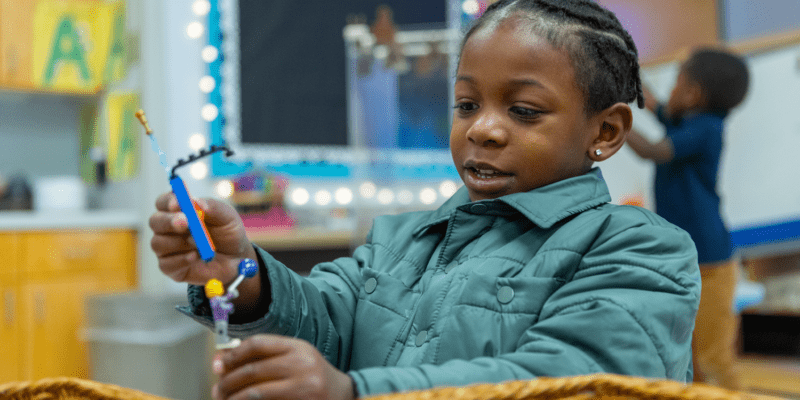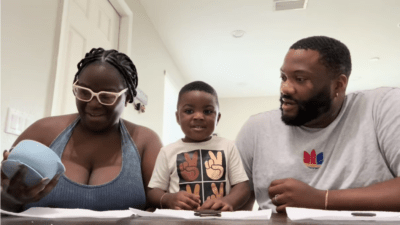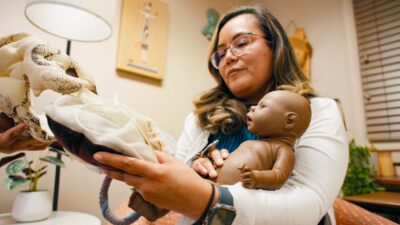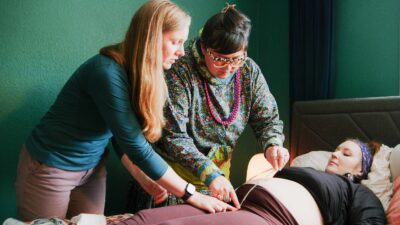Maycomb Capital manages the philanthropy-backed Educational Resources Impact Fund, which strives to expand access to high-quality instructional materials and support to students across the country. The fund is a partnership between the W.K. Kellogg Foundation, the Bill & Melinda Gates, the William and Flora Hewlett and the Walton Family foundations and the Charles and Lynn Schusterman Family Philanthropies.
In a three-way conversation, Maycomb’s senior advisor Lin Johnson III and Susie Lee and Renee Blahuta from the Kellogg Foundation traded information and perspectives on the fund. The article is part of a partnership between ImpactAlpha and Mission Investors Exchange to bring new ideas and perspectives in impact investing. It was originally published by ImpactAlpha in February 2023.
By the end of 2023, the Educational Resources Impact Fund (ERIF) expects to have closed four investments in nonprofit providers of open educational resources (OER), and has identified a strong pipeline for its remaining investment capital. Excitingly, ERIF’s initial hypothesis is proving true – demand exists for flexible mission-aligned debt among OER developers and even exceeds what was previously anticipated. ERIF has already capitalized on these trends by exploring other innovative product types to serve these organizations, including co-investment opportunities to meet borrower capital needs while optimizing portfolio construction.
Lin Johnson III: The W.K. Kellogg Foundation has been involved with the Educational Resources Impact Fund, or ERIF, since its inception. Share some of the initial thinking around the fund.
Renee Blahuta: The Kellogg Foundation is focused on taking a systems approach to achieve long-term, sustainable and positive outcomes in early childhood education – grounded in our DNA of racial equity, community engagement and leadership development. We wanted to address one of the harsh realities affecting education today: American public school students – particularly students of color and those from low-income or immigrant families – routinely lack meaningful opportunities to learn and experience a sense of belonging in school. This only widens the significant achievement gaps that have long existed in America among students by race and class.
The Kellogg Foundation and the other collaborating funders that launched ERIF saw that nonprofits have been creating and driving effective use of high-quality, culturally relevant open educational resources over the last decade. And we realized the philanthropic grant funding available to these organizations – which had helped catalyze development and adoption of their offerings and helped enable them to grow into viable businesses – was no longer sufficient to meet the growing demand across this expanding ecosystem. That is where ERIF comes in.
We believe ERIF holds promise as a lever for change in K-12 education systems nationwide. By supporting the creation and distribution of high-quality instructional materials and culturally relevant teaching supports, the fund advances effective teaching and learning acceleration to address knowledge gaps. There’s great potential to create an outsized positive impact on both daily and longer-term academic and social-emotional experiences and outcomes for Black, Latinx and other underserved students nationwide.
Susie Lee: ERIF was created to fill capital gaps that seemed to be holding back organizations that work in this space from growth and scale. Lin, can you discuss the financing ERIF is providing and what it enables?
Johnson: ERIF provides loans between $1 million and $3 million with a relatively long term – up to seven years – and repayment schedules that match the borrower’s business cycle.
Unlike commercial banks or other non-bank lenders in the market, we can structure our product flexibly to meet the diverse needs of our borrowers. Whereas one borrower may need a traditional term-loan, another may need something that looks more like a line of credit.
We are already doing this with our first two borrowers, Illustrative Mathematics and CenterPoint Education Solutions. The financing takes into account the uneven nature of their costs and revenue.
Susie, the Kellogg Foundation as well as the other foundations in this fund are using their philanthropic resources in creative ways. Can you share why it was important to make this a return-seeking investment rather than a grant?
Lee: Matching the impact opportunity with the appropriate form of capital from our investment toolkit helps optimize outcomes. A fund making loans to high-growth revenue-generating nonprofits is a business model that will return capital and generate returns to the fund if successful, so it makes sense to invest rather than make a grant.
We invested as a program-related investment to provide as much flexibility as possible given the early stage and innovative nature of ERIF. To scale up, future ERIF funds will need more commercial capital and an established track record of generating returns to limited partners.
Blahuta: No doubt now is the time for this type of innovative financing to catalyze real scale in the market for high-quality core curricula, as well as intervention and supplemental instructional materials.
Lin, drawing from your prior experience as the deputy superintendent and chief financial officer of Shelby County Schools in Memphis, Tenn., as well as your current leadership role with ERIF, what have you heard – if anything – from teachers you have worked with about the importance of high-quality instructional materials? How do you think ERIF will impact their work if it is successful?
Johnson: Recent National Assessment of Educational Progress scores show that the pandemic has wiped away decades of learning progress, further widening inequities for our most vulnerable students. Coupled with the learning loss is the current shortage of teachers who can deliver effective instruction and engage students in a culturally inclusive and affirming way.
As a country, we are exiting the pandemic to enter an educational crisis where students are ill-equipped to succeed. High-quality instructional material is the equalizer we need to ensure learning acceleration, effective classroom teaching, and deep student engagement for all students, regardless of their diverse identities and their teachers’ expertise.
In my experience, I have seen how high-quality instructional materials raise the foundation for effective instruction by ensuring all teachers set high expectations and have the tools to deliver quality, engaging teaching. Also, part of what it means to be high-quality is that the instructional materials affirm students’ identities and experiences while offering them a window to positively understand, challenge and impact others, their local communities and our society.
I am thrilled to be leading ERIF and its mission to finance organizations creating material that helps ensure all students feel engaged, seen and included in their learning journey.
Renee Blahuta is a Program Officer at the W.K. Kellogg Foundation. Susie Lee is a Program Related Investment Officer at the W.K. Kellogg Foundation. Lin Johnson III is a Senior Advisor to Maycomb Capital, leading the Firm’s Education Resource Impact Fund efforts.








Comments